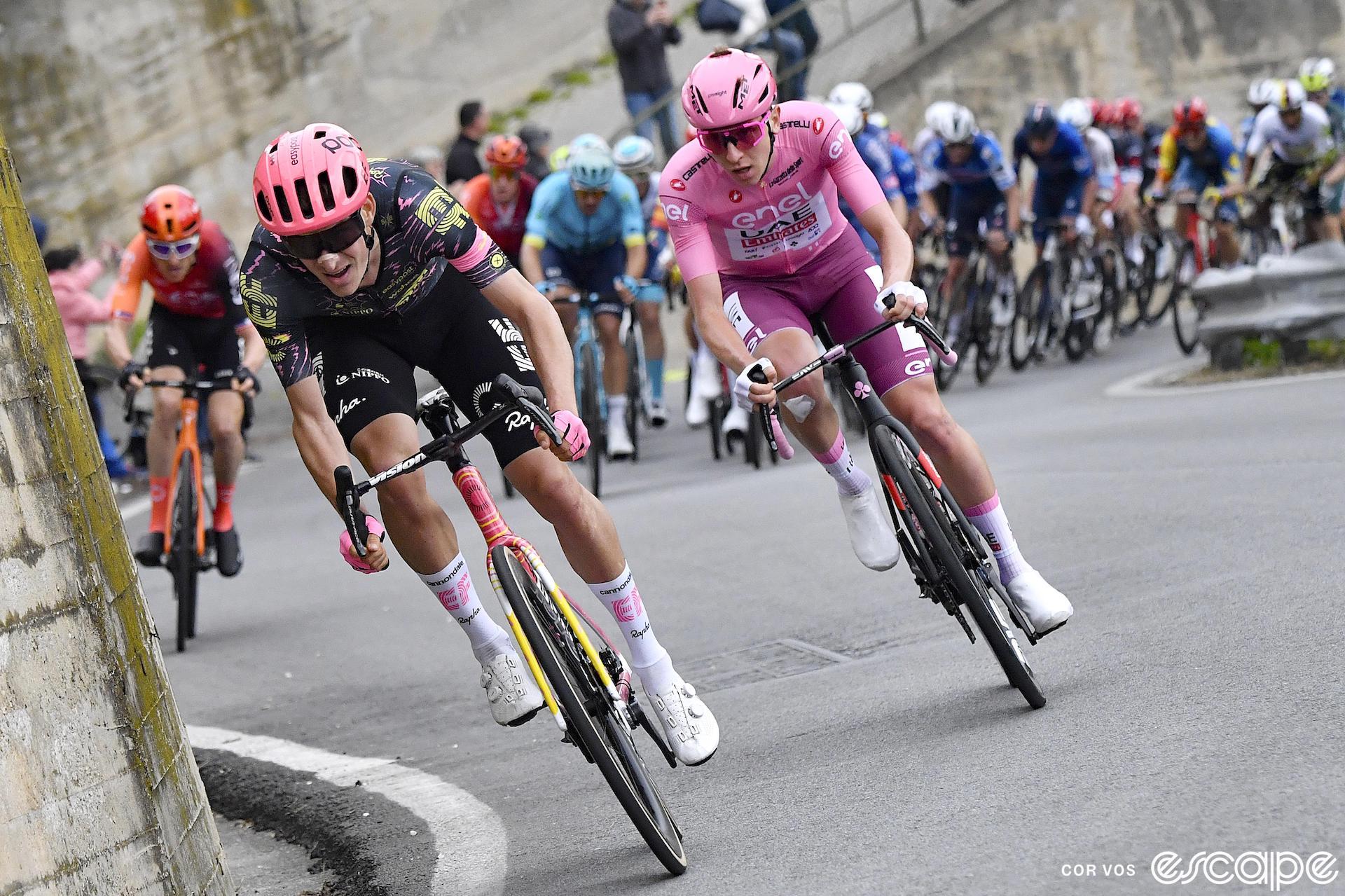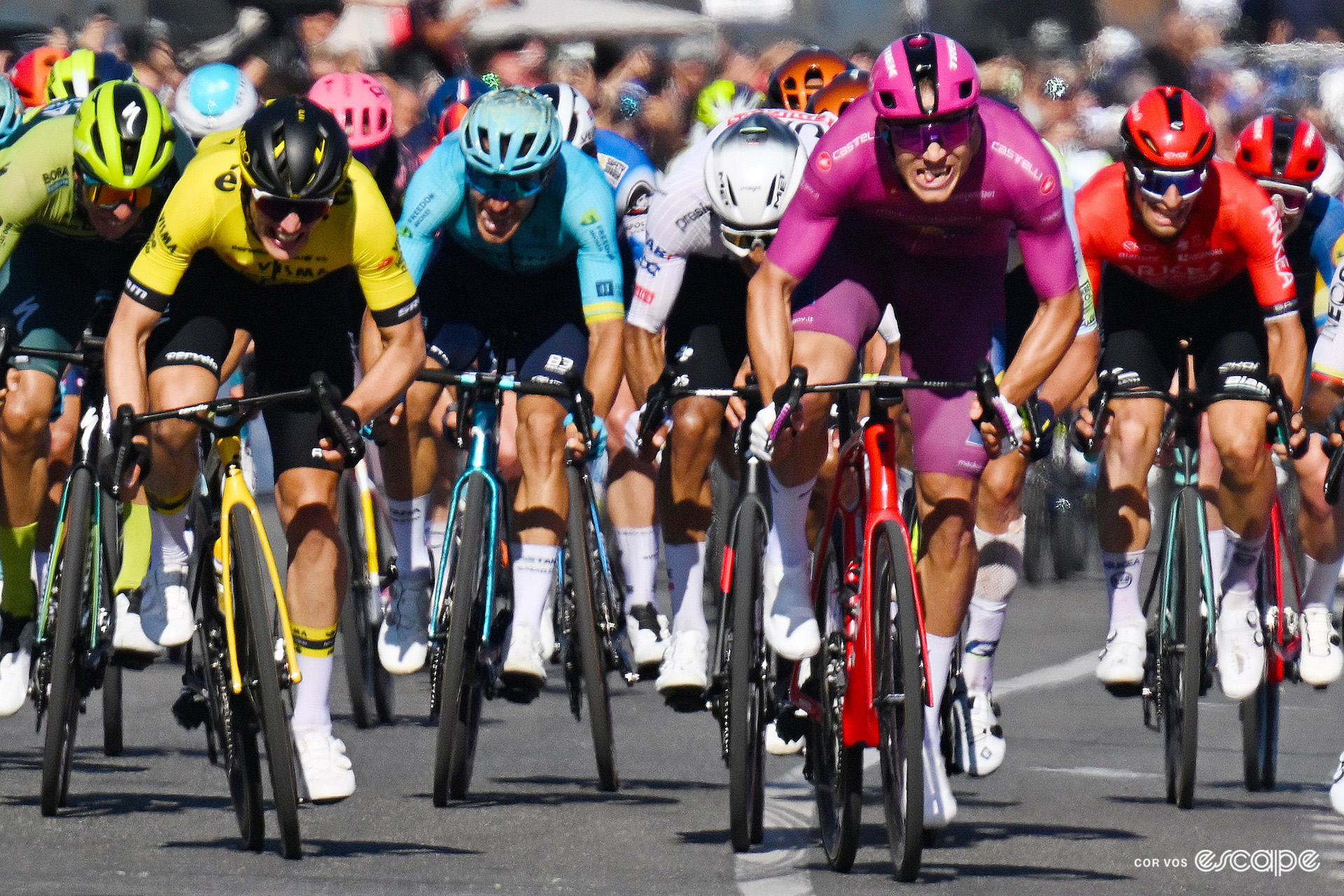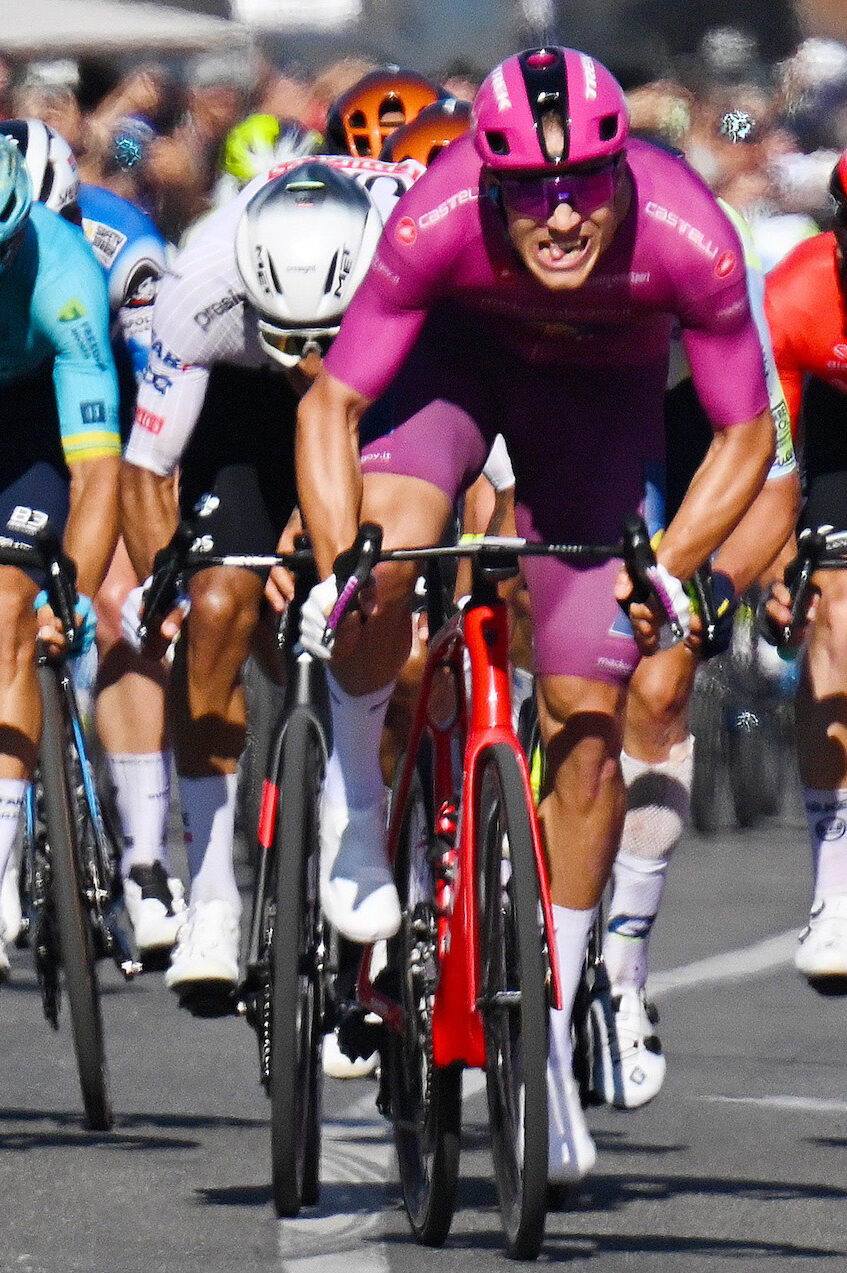There have now been four stages of the Giro d’Italia that would have been marked down as sprint opportunities before the race, but not one of them has come particularly close to a typical Grand Tour bunch sprint. It seems that at this edition in particular, we’re getting a real flavour of the Giro’s disruptive character, thanks in large part to the man in pink who is also disruptive by nature, but it’s also down to the race itself.
Sunday’s stage 9 into Naples is a case in point. At first glance it’s a 214-kilometre stage that transports the peloton across half the country to a finish along the coast. Many of the roads are broad and straight(ish), there are few hills, and a couple of intermediate sprints in perfectly manageable locations rather than halfway up a bloody great mountain. However, this stage had a sting in its tail, the last 40 kilometres containing a small handful of lumps and bumps on predominantly urban streets that switched from wide to narrow, on varying surfaces, and with near-relentless changes in direction.
That veteran breakaway artist Thomas De Gendt (Lotto Dstny) won here two years ago should tell you something, as should last year’s last-gasp heartbreak for Alessandro De Marchi (Jayco-AlUla) and Simon Clarke (Israel-Premier Tech). This year, the peloton was eager to hunt down the breakaway before the finale, but it almost backfired when fresh legs sought new opportunities, and the sprinters came dangerously close to racing for second behind late attacker Jhonatan Narváez (Ineos Grenadiers).

The drama in Naples brings to mind a similar dynamic earlier in the race, albeit not quite as wildly dramatic as on stage 9. After finally taking the pink jersey with stage 2 victory, you’d think Tadej Pogačar might take a day off on Monday’s sprint stage, but opportunity knocked, and Pogačar couldn’t help but answer the call when Mikkel Honoré (EF Education-EasyPost) launched on the slight rise close to the finish. Similar happened just 24 hours later when Filippo Ganna (Ineos Grenadiers) tried his luck 4 km from the line.
Pogačar’s brief adventure with Geraint Thomas on stage 3 was short-lived and unsuccessful, but it had a lot to say. Of course, Pogačar’s own restless determination was particularly loud, but his actions also spoke for the genius course design.
Sprint stages can be pretty dry occasions, especially when the distance is interminable and the terrain pan flat, but the Giro organisers seem particularly good at lighting a fire under the peloton – and breakaway – before the last kilometre, whether by adding a launchpad, staging the sprint on a ramp or after a long descent, forcing the peloton through tight urban roads on the run-in, or all the above.
So how do you build a good sprint stage? Make it as long as you like, include as many long highways as you like, all to lull sprinters into a false sense of security, then add some spice to the last 10-40 kilometres to inspire aggression from the underdogs. Even if there’s still a reasonable chance the sprinters will win, there may be fewer of them who make it, the story will be so much better, and the victory will feel so much bigger.
Did we do a good job with this story?


